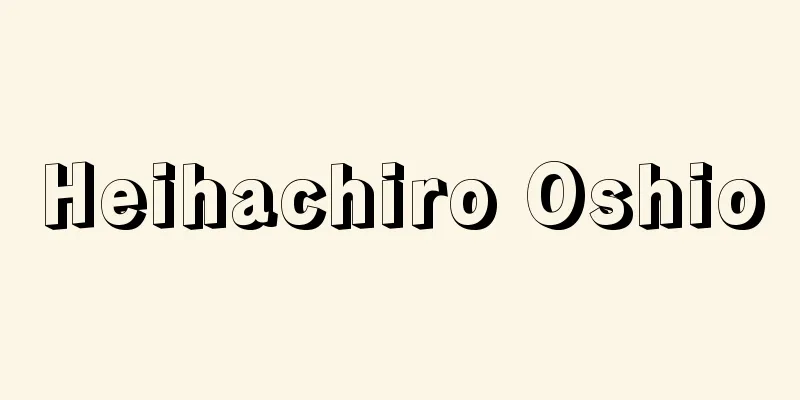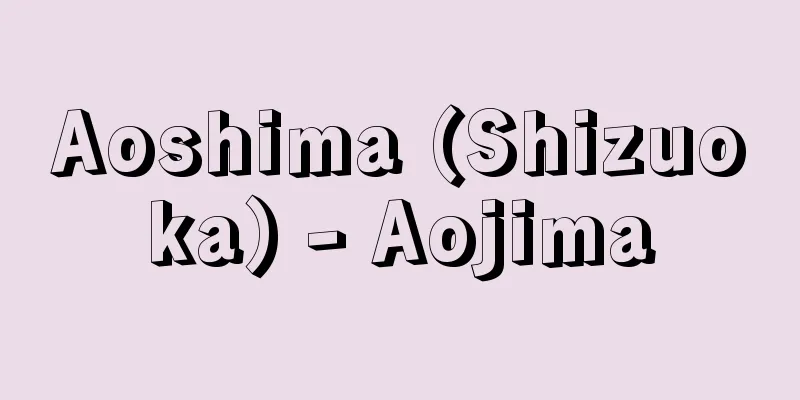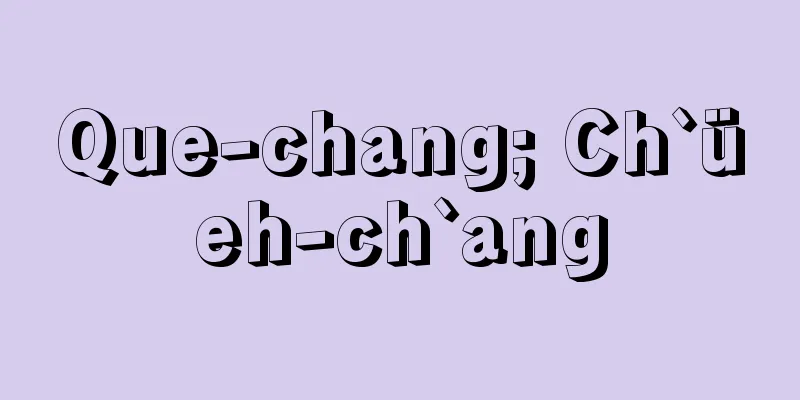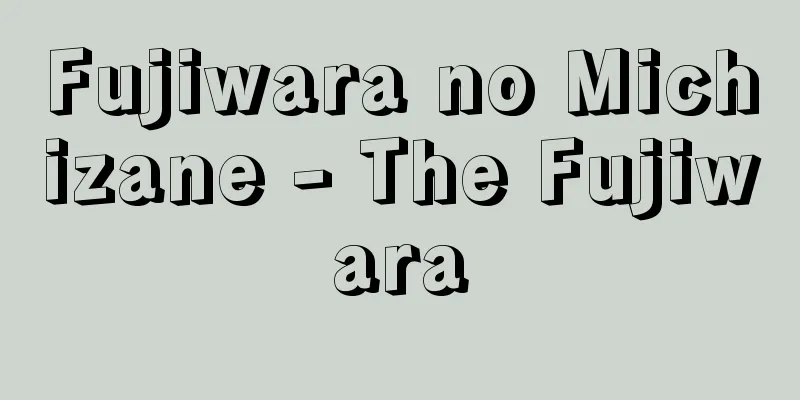Heihachiro Oshio

|
A Yangming scholar in the late Edo period and a yoriki (deputy minister of the Osaka magistrate's office). His given name was Goso, his pen name was Shiki, and his pen names included Rensai and Chusai. Having lost both parents at a young age, he became the successor to his grandfather, who was a yoriki (deputy minister of the Osaka magistrate's office), and began serving at the magistrate's office at around the age of 13 or 14. At the same time, he learned Yangmingism almost entirely on his own, and in his early 30s, he opened a private school called Senshindo in his home. Many of his disciples were yoriki and doshin (police officers) of the Osaka magistrate's office, who were at the very bottom of the unstable shogunate-han system of rule in the late Edo period, as well as village ruling classes in nearby farming villages. As a yoriki (police officer) of the Osaka magistrate's office, he achieved successes such as arresting Christians, exposing corrupt officials, and exiling monks who had violated the precepts, and rose to the highest rank of the yoriki's office, but he retired at the age of 38 when his superior, Takai Yamashiro no Kami (Sanenori, 1763-1834), resigned. After that, he devoted himself to lecturing and writing at Senshin-do, and produced works such as "Senshin-do Sakki" (two volumes), "Rumongous Kukyo Shugo" (two volumes), "Fukuroku" (one volume), "Augmented Commentary on the Sutra of Filial Piety" (one volume), and "Kohon Daigaku Katsumoku" (eight volumes). His Yangmingism was one of the most prominent among Confucian scholars at the end of the Edo period, both in its interpretation of the classics and in his extensive study of the works of Confucian scholars from the Song and Ming periods in China. In 1836 (Tenpo 7), during the Great Famine that had been occurring for years, many people in Osaka city began to starve to death. From the standpoint of Yangmingism's "all things are one and benevolent," he could not stand by and watch the devastation, and submitted a petition to the authorities for relief measures, but they were rejected. In February of the following year, 1837, he sent out a manifesto to the neighboring farmers, and together with his disciples, raised an army to punish the government officials in Osaka city and the privileged wealthy merchants who were in collusion with them, but he could not last more than a day and fled. While hiding in the city, he was surrounded by Bakufu officials, and committed suicide on March 27 of the same year. His grave is located within Joshoji Temple in Suehirocho, Kita-ku, Osaka city. [Kimiko Miyagi April 18, 2016] "Oshio Chusai" edited by Miyagi Kimiko (included in "27 Great Works of Japan", 1984, Chuokoron-Shinsha)" ▽ "Oshio Heihachiro, revised edition, by Okamoto Ryoichi (1975, Sogensha)" ▽ "Oshio Heihachiro, by Miyagi Kimiko (1977, Asahi Shimbun Company/reprinted 2005, Pelican)" ▽ "Oshio Heihachiro, by Koda Shigetomo (Chuko Bunko)" [Reference items] | | |Source: Shogakukan Encyclopedia Nipponica About Encyclopedia Nipponica Information | Legend |
|
江戸後期の陽明学者、大坂町奉行与力(まちぶぎょうよりき)。諱(いみな)は後素、字(あざな)は子起、号は連斎、中斎など。幼少期に父母を亡くしたため、大坂町奉行与力だった祖父の嗣(し)となり、13~14歳ころより町奉行所に出仕する。かたわら、ほとんど独学にて陽明学を修得し、30代の前半に自宅に私塾「洗心洞(せんしんどう)」を開く。門弟には、江戸時代後期、動揺する幕藩制支配の最末端を担った大坂町奉行の与力・同心や、近隣の農村の村落支配者層が多かった。大坂町奉行与力としては切支丹(キリシタン)逮捕、奸吏(かんり)糺弾、破戒僧遠島等々の実績をあげ、与力としての役職の頂点に昇るが、上司の高井山城守(やましろのかみ)(実徳(さねのり)、1763―1834)の辞任と進退をともにし、38歳にて致仕する。以後は「洗心洞」での講学と著述に専心し、『洗心洞箚記(さっき)』上下2巻、『儒門空虚聚語(しゅうご)』2巻、『同附録』1巻、『増補孝経彙註(いちゅう)』1巻、『古本大学刮目(かつもく)』8巻などの著述をなす。その陽明学は経書の解釈において、また、中国・宋明(そうみん)時代の儒者の著作の博引ぶりにおいて、幕末の儒林で有数のものである。1836年(天保7)、年来の大飢饉(ききん)のなかで大坂市中に餓死人が続出すると、陽明学の「万物一体の仁」の立場より、その惨状を傍観視できず、当局に救済策を上申するが拒否される。翌1837年2月、近隣の農民に檄文(げきぶん)を飛ばし、大坂市中の諸役人とそれと結託した特権豪商を誅伐(ちゅうばつ)するため、門弟とともに挙兵するが、小一日もちこたえられず敗走。市中潜伏中、幕吏に囲まれ、同年3月27日自刃。墓は大阪市北区末広町、成正寺(じょうしょうじ)内にある。 [宮城公子 2016年4月18日] 『宮城公子編『大塩中斎』(『日本の名著27』所収・1984・中央公論社)』▽『岡本良一著『大塩平八郎』改訂版(1975・創元社)』▽『宮城公子著『大塩平八郎』(1977・朝日新聞社/復刊・2005・ぺりかん社)』▽『幸田成友著『大塩平八郎』(中公文庫)』 [参照項目] | | |出典 小学館 日本大百科全書(ニッポニカ)日本大百科全書(ニッポニカ)について 情報 | 凡例 |
Recommend
Aufklärung (English spelling) Aufklarung
...the general term for an ideological movement t...
ASDE - Azde
Airport surface detection equipment : Radar used t...
Law of strata identification (by fossils)
Each stratum contains fossils that are unique to i...
Friedrich Hölderlin
German poet. Born on March 20th into a clergyman ...
Elan Vital - Elective
... In the 19th century, vitalism was dealt a blo...
basic taste
...The involvement of the peribranchial nucleus i...
Lago Nahuel Huapí (English spelling)
A lake in the southwest of Argentina. In the Patag...
Theater festival - Engekisai
It is an event where many plays are performed at ...
Anas crecca carolinensis (English spelling) Anascreccacarolinensis
… [Yanagisawa Norio]. … *Some of the terminology ...
Honey - honey
Honeybees collect nectar from plants, break it do...
Bordeaux mixture
A homemade fungicide made from copper sulfate and...
Echizen Sanmonto
〘Noun〙 One of the ten schools of Jodo Shinshu. Dur...
Fujiwara no Yasuhira
Year of death: Bunji 5.9 (1189) Year of birth: 115...
discover
…It is generally understood that something previo...
Anchovy - anchovy (English spelling)
Anchovy is the English name for a small fish simi...









